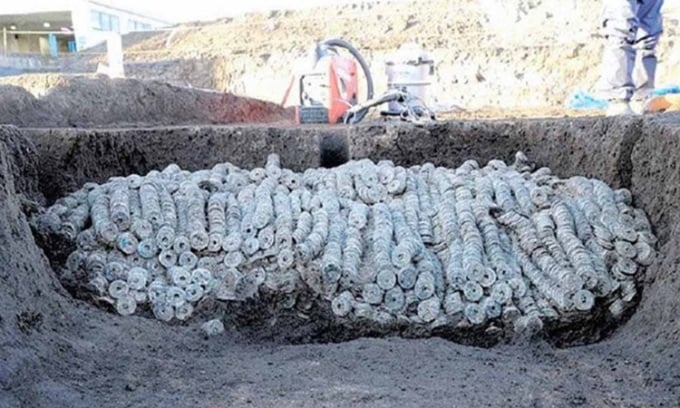
Treasure of 100,000 ancient coins buried under construction site
Japan A huge number of coins strung together in more than 1,000 chains were discovered by construction workers in Maebashi city.

The coins in the treasure trove date from several centuries. PH๏τo: Ancient Origins
A huge hoard of 100,000 ancient coins was unearthed during construction work in Maebashi City in central Japan, including a rare specimen of Ban-Lang, the first unified currency in Chinese history. The coins, which date back thousands of years, were strung together in strings of about 100 coins, strung with straw ropes, and hidden during a period of war, Ancient Origins reported on November 13.
The oldest coin in the hoard is a Ban-liang coin that was struck in 175 BC, more than 2,000 years ago. The specimen is 2.3 centimeters in diameter and one millimeter thick, with a 7-millimeter square hole in the center engraved with the characters Ban and Lang. The coins are located in the Sojamachi district, near a medieval Japanese residential area, revealing a method of hiding wealth that the aristocracy used in times of war.
Authorities in Maebashi found a 60 x 100 cm piece of straw, indicating that the coins were wrapped in straw mats before being buried. Of the 334 coins examined, researchers confirmed that there were at least 44 types, dating from 175 BC to 1265. Most originated from the Western Han Dynasty to the Southern Song Dynasty. Ban-liang coins were first issued by Emperor Qin Shi Huang around 210 BC. They were used until the Western Han Dynasty until they were replaced by Wu-shu coins in 118 BC. The latest coin was produced in 1265, indicating that the coins were buried during the period (1185 – 1333).
Spanning one kilometer, the excavation site may have been the center of Kozuke Province during the Kofun period, from the late 3rd to 7th centuries, the predecessor of Gunma Province and a center of trade activities.



